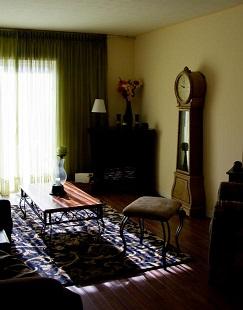An Inside Guide To Hardwood Flooring
There are lots of flooring options these days but hardwood seems to be one type of flooring which is both practical and long lasting. Not only that, but there are numerous types of hardwood flooring to choose from which go from the well known types of wood like cedar and oak to the more exotic types such as Asian rosewood. Which hardwood flooring your choose rests entirely on your taste and the budget your working with.

When you buy the wood you find that it is sold in pretty much the same way where ever you live. So whether you choose a Ted Todd hardwood flooring Hertfordshire company for your wood or one in Essex it's all pretty much the same unlike when you buy products which may be made a certain way in one particular area.
For solid hardwood the process is relatively simple as the wood is literally cut from one log which forms the planks used for flooring and the most popular method of installation is by the nailed down method which is pretty much as simple as it sounds. There is one drawback however in that it is susceptible to the change in temperature, especially with regards to heat and humidity. You can buy hardwood on the other hand which has been manufactured in such a way that they are a lot more resistant temperature and this type is called engineered hardwood.
It's often cheaper too so it has proven to be very popular but a lot of people still opt for solid hardwood because they like the unique look solid hardwood provides. If you plan on having hardwood over a solid concrete floor then you will have no option but to buy engineered boards as solid hardwood has to be nailed down rather than glued. This is because solid hardwood is just that, hardwood all the way through and as such does not lend itself well to being laid down on anything other than a wooden subfloor. Engineered hardwood is quite different as only the surface of the board is made from hardwood where as the rest is made from ply.
Whether you choose solid hardwood or engineered you'll find that they both provide a wonderful looking floor and in many cases you often can't tell the difference between them. Which type of wood you choose is another consideration as you could buy oak, birch, cherry or hickory to name a few. Each type of wood has its own characteristic but what makes this flooring even more unique is the color grain variation and knots that you can see throughout. How much or how little you want to see on your hardwood flooring is your preference but the good news is that you can actually gage how much by before you even buy the wood.
The reason for this is because all woods are sorted into grade categories which are divided up based on the number of knots, grain variations and markings that each type has. For those that prefer a lot of variation with plenty of knots its good news on the cost front because high grade woods are depicted by their purity. Both American and international markets have slightly different grading systems but tend to follow a similar level of acceptance per grade. Based on this, the highest class grade of hardwood usually has no knots or displaced markings of any kind along with a nice and even flow of color grain. As you go down the grades the prices get lower but characteristic variations increase along with the markings and knots.
Some may baulk at the idea of having lower grade hardwood installed by a hardwood flooring company or somewhere else but the fact remains that a lot of people like a rougher finish to the point that even second hand hardwood is bought up from old houses. To each their own as they say but it's good to know that there is quite a varied choice when it comes to hardwood flooring.
So in deciding that you want hardwood flooring for your home make sure that you choose wisely, both the type of wood, the grade and the location because it's the type of floor that will last a very long time if you take care of it.

